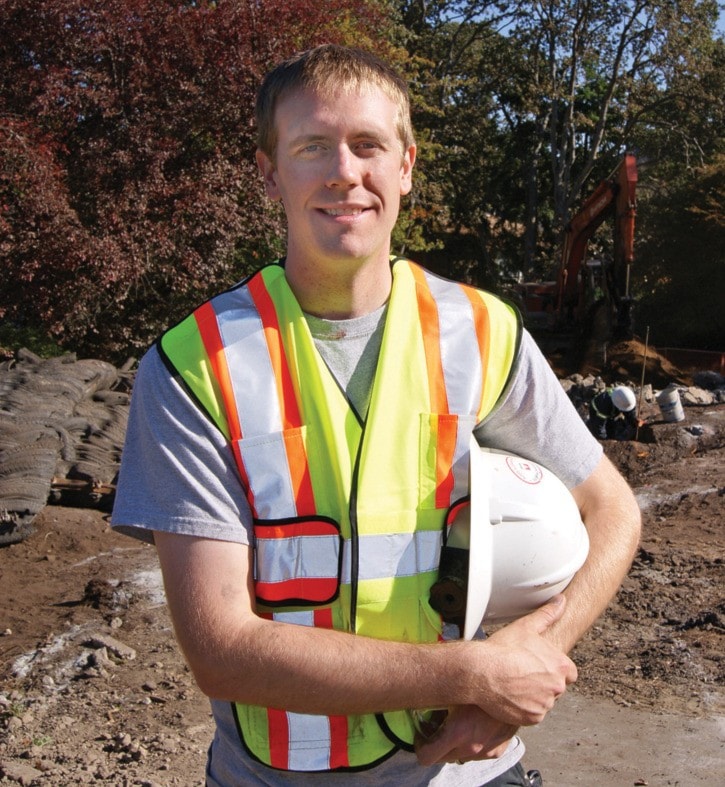Construction of Greater Victoria’s first "passive house" has began on Oak Crest Drive, a home that promises to set high standards for energy efficiency.
The project broke ground Sept. 24 after much resistance from area residents, who were vehemently against the previously proposed duplex – a plan that they felt would set a dangerous precedence and open the door monster homes on the large lots.
Scaled back to a single family dwelling, neighbours are now supportive of the type of home developer Mark Bernhardt is bringing to the community – a house built to the high energy efficiency standards, or 60 to 90 per cent more efficient than standard house construction.
“We can’t hold it against the neighbours for lodging concerns because it is their right and change is scary,” said Bernhardt, property owner and general contractor for Bernhardt Passive Home. “Rezonings are always controversial and change causes concern.”
The current plan is for a home slightly smaller than the original and has undergone some changes to fit within the zoning. It features a flat roof, as opposed to the originally-designed peaked roof, a wall of south facing windows and an overhang that allows for shade in the summer and sunlight in the winter as the angle of the sun changes with the season. Bernhardt plans to live in the five-bedroom house, while his father Rob, project manager will live in the basement suite.
“The general function is still the same,” he added.
The home comes with a total price tag of $600,000, or $10,000 more than the same home standardly constructed. The difference will be recouped in six to 10 years of energy savings, Bernhardt said.
Passive house certification is solely based on energy efficiency. A passive house maximizes energy collected from sunlight and through building shape, orientation, airtightness and heat recovery ventilation to achieve efficiencies 60 to 90 per cent greater than standard construction.
They require so little heat that they can be heated primarily through passive sources such as sunlight and existing appliances.
The passive house may be the first of its kind in the region, but according to Casey Edge, executive officer with the Victoria branch of the Canadian Home Builders’ Association, the Berndhardt’s are far from the only developers opting to adhere to high energy efficiency standards.
“Everyone is in favour of increased energy efficiency in homes and being environmentally responsible, but it’s important not to continually ratchet up the energy efficiency without doing the due diligence,” Edge said, quoting the leaky condo fiasco of the ‘80s and ‘90s. “British Columbia did that once already and it would be folly to do that again.”
As for a return in investment on energy savings, Edge is mindful of the actual cost of higher priced homes, once interest rates are taken into consideration.
“People say over the long term, savings will be recouped, well that will be quite a long time,” he said. “We have to balance energy efficiency with affordability – especially in this region where we have some of the highest costs of living in North America.”
Bernhardt believes the merits reach beyond economics.
“As a byproduct of that energy efficiency, you get all kinds of other benefits, like pristine indoor air quality, even temperatures throughout and warm concrete floors in the basement, even without radiant heating.”
nnorth@saanichnews.com
